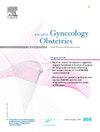跨性别男性的生殖功能和生育能力保存:一个法国案例系列。
IF 1.7
4区 医学
Q3 OBSTETRICS & GYNECOLOGY
Journal of gynecology obstetrics and human reproduction
Pub Date : 2025-02-01
DOI:10.1016/j.jogoh.2024.102893
引用次数: 0
摘要
背景:由于性别确认激素治疗(GAHT)和手术干预对生育能力的潜在影响,跨性别男性面临生殖挑战。在“女向男”转变期间,睾酮治疗会导致无排卵和闭经。虽然这些影响在停止治疗后通常是可逆的,但雄激素对未来生育能力和潜在儿童健康的长期影响仍然知之甚少。尽管长期以来被忽视,但在跨性别男性中,为人父母的愿望是一个重要的现实。如今,医疗技术的进步和立法的变化使得主要通过卵母细胞冷冻保存的生育能力保存(FP)对变性男性成为可能。然而,关于这一人群的计划生育结果的公开数据仍然有限。设计:我们进行了一项回顾性研究,比较来自卵母细胞捐赠计划的变性男性和假定有生育能力的女性的卵巢刺激结果。结果:2018年6月至2022年2月期间,118名跨性别男性进行了计划生育咨询,其中13人最终通过卵巢刺激后的卵母细胞玻璃化进行了计划生育。将这13个人与13名匹配的女性卵母细胞捐赠者的对照组进行比较。我们没有观察到卵巢刺激的临床和生物学结果有任何显著差异,包括刺激持续时间、给予的FSH总剂量、获得的卵母细胞数量和获得的成熟卵母细胞数量。结论:我们的经验表明,卵巢刺激后通过卵母细胞玻璃化进行计划生育对跨性别男性是可行和有效的,其结果与同年龄的顺性女性相当。需要更大规模的研究来验证这些发现并评估长期成功率。本文章由计算机程序翻译,如有差异,请以英文原文为准。
Reproductive functions and fertility preservation in transgender men: A French case series
Background
Transgender men face reproductive challenges due to the potential impact on fertility of gender-affirming hormone therapy (GAHT) and surgical interventions. Testosterone therapy during “female to male” transition leads to anovulation and amenorrhea. Although these effects are typically reversible upon stopping treatment, the long-term effects of androgens on future fertility and health of potential children remain poorly known. Despite being long overlooked, the desire for parenthood is a significant reality among transgender men. Advances in medical techniques and legislative changes now make fertility preservation (FP), primarily through oocyte cryopreservation, possible for transgender men. Yet, published data on FP outcomes for this population are still limited.
Design
We conducted a retrospective study to compare ovarian stimulation outcomes between transgender men and presumed fertile women from an oocyte donation program.
Results
Between June 2018 and February 2022, 118 transgender men were referred to the FP consultation, of whom 13 ultimately underwent FP through oocyte vitrification following ovarian stimulation. These 13 individuals were compared to a control group of 13 matched female oocyte donors. We did not observe any significant difference in the clinical and biological outcomes of ovarian stimulation, including duration of stimulation, total FSH dose administered, number of oocytes retrieved, and number of mature oocytes obtained.
Conclusion
Our experience suggests that FP through oocyte vitrification after ovarian stimulation is feasible and effective for transgender men, with outcomes comparable to those of cisgender women of the same age. Larger studies are necessary to validate these findings and assess the long-term success rates.
求助全文
通过发布文献求助,成功后即可免费获取论文全文。
去求助
来源期刊

Journal of gynecology obstetrics and human reproduction
Medicine-Obstetrics and Gynecology
CiteScore
3.70
自引率
5.30%
发文量
210
审稿时长
31 days
期刊介绍:
Formerly known as Journal de Gynécologie Obstétrique et Biologie de la Reproduction, Journal of Gynecology Obstetrics and Human Reproduction is the official Academic publication of the French College of Obstetricians and Gynecologists (Collège National des Gynécologues et Obstétriciens Français / CNGOF).
J Gynecol Obstet Hum Reprod publishes monthly, in English, research papers and techniques in the fields of Gynecology, Obstetrics, Neonatology and Human Reproduction: (guest) editorials, original articles, reviews, updates, technical notes, case reports, letters to the editor and guidelines.
Original works include clinical or laboratory investigations and clinical or equipment reports. Reviews include narrative reviews, systematic reviews and meta-analyses.
 求助内容:
求助内容: 应助结果提醒方式:
应助结果提醒方式:


